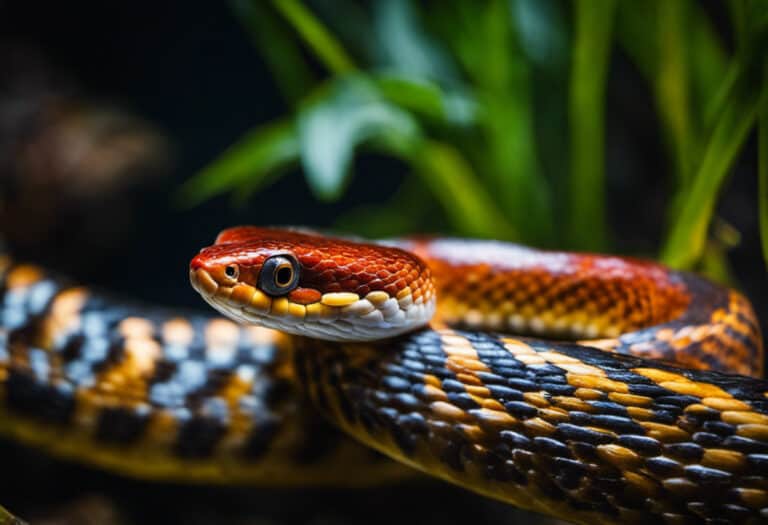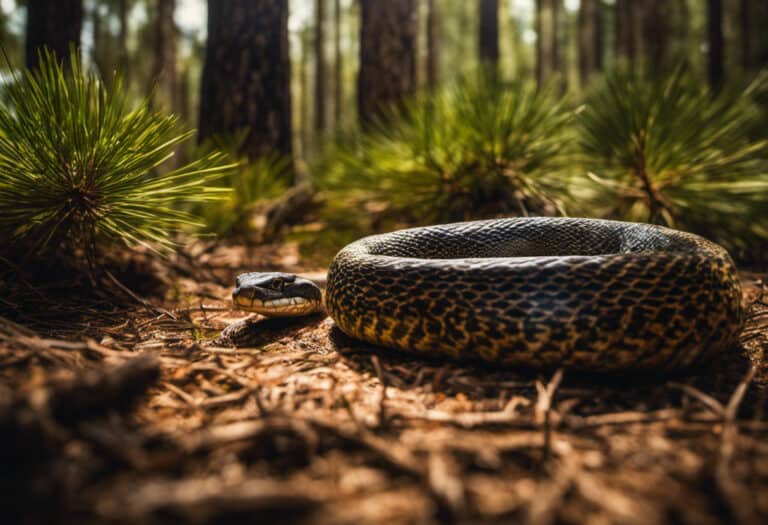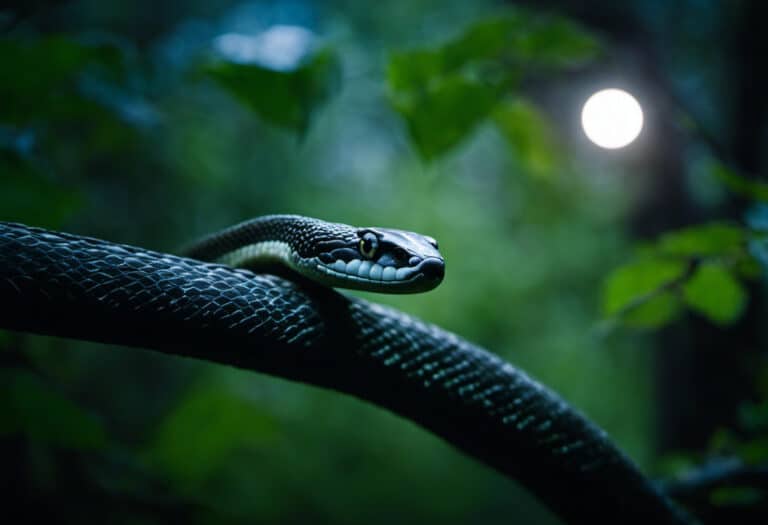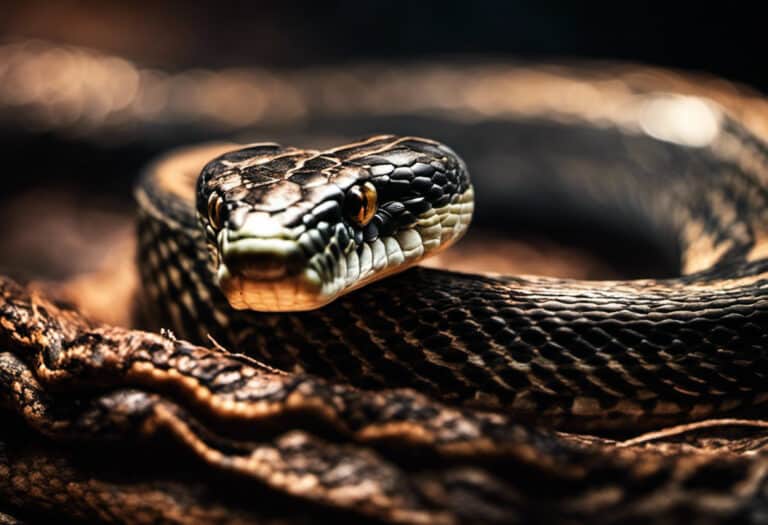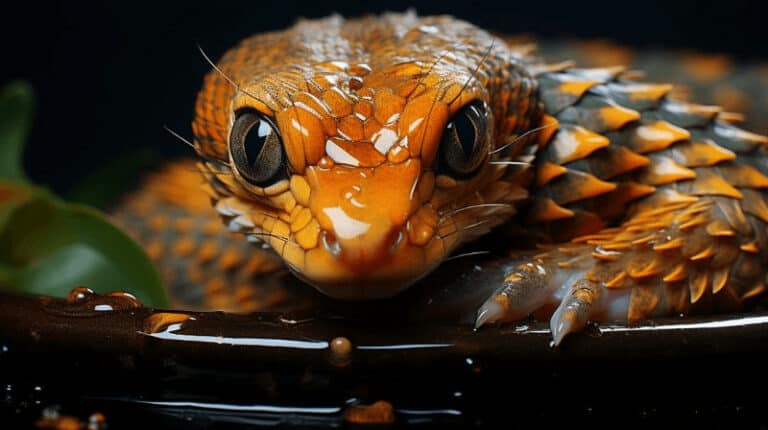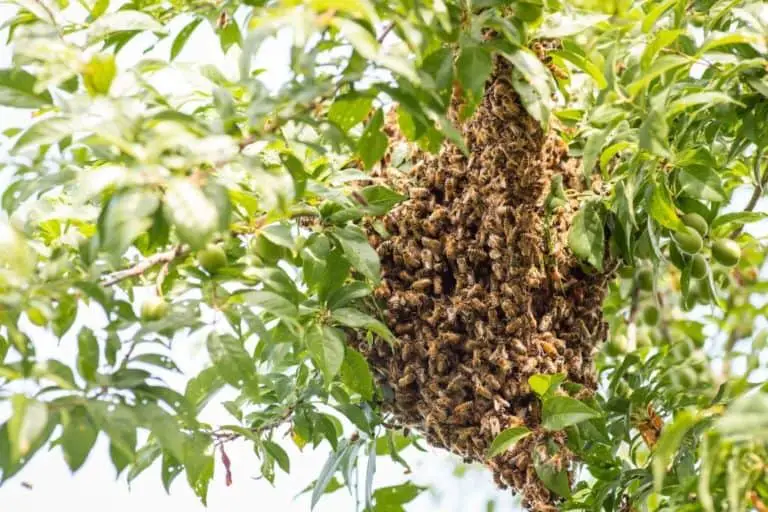Do Corn Snakes Bite Often?
Curious about the biting tendencies of corn snakes? Well, you’re in luck! In this article, we’ll delve into the behavior and bite characteristics of these vibrant reptiles.
Corn snakes, popular pets known for their docile nature, rarely bite. However, it’s important to understand the factors that may trigger their bites, especially if you’re handling wild specimens.
But don’t worry, these non-venomous bites are usually painless, comparable to a paper cut or needle prick. So, if you’re ready to uncover the truth about corn snake biting, keep reading!
Key Takeaways
- Corn snakes can bite, although it is rare.
- Bites from corn snakes are not dangerous and cause only minor discomfort.
- Corn snakes are non-venomous and rely on constriction to capture prey.
- Proper care and handling techniques can minimize the risk of bites from corn snakes.
Frequency of Corn Snake Bites
Corn snakes don’t bite often, and bites are rare occurrences when they feel threatened or mistake fingers for food. Understanding the factors that affect their biting behavior can help you prevent bites and ensure a harmonious relationship with your pet.
Sudden movement can startle corn snakes, leading to defensive bites. Shedding stress can make them more prone to biting, as can external factors like loud noises or temperature fluctuations. Hunger can also cause them to bite.
To prevent bites, it’s important to handle them properly and avoid overhandling. Providing a suitable environment with consistent conditions and regular cleaning can reduce stress and aggression.
Additionally, avoiding unnecessary contact before feeding and being calm and quiet during handling can help prevent bites. By following these tips, you can enjoy your corn snake without the worry of being bitten.
Factors Influencing Corn Snake Biting
If startled or feeling threatened, factors such as sudden movements, shedding stress, and external disturbances can influence a corn snake’s likelihood of biting. Understanding these factors is crucial for preventing bites and ensuring the well-being of both the snake and its owner.
When it comes to shedding stress, corn snakes may become more irritable and prone to defensive behavior during this process. Additionally, sudden movements can startle them, triggering a defensive response. External disturbances, such as loud noises or temperature fluctuations, can also agitate corn snakes and increase the chances of biting.
To prevent bites, it’s important to handle corn snakes with care, avoiding sudden movements and providing a calm and familiar environment. Regular feeding, proper hygiene, and maintaining a stress-free habitat are also essential strategies for preventing bites.
Understanding Corn Snake Teeth
Understanding the structure and function of their teeth can help you appreciate the unique characteristics of corn snakes. These fascinating creatures have evolved teeth that are specifically designed for their feeding habits and prey capture. Here are some key points to consider:
-
Corn snake teeth structure: They’ve numerous small, sharp teeth that resemble tiny fish bones. These teeth are thin and lack fangs, making their bites relatively harmless to humans.
-
Understanding biting behavior: Corn snakes rarely bite, but when they do, it’s often due to mistaking fingers for food or feeling threatened. Knowing their biting behavior can help you prevent unnecessary bites and handle them safely.
-
Teeth for prey capture: Corn snakes have between 20 and 30 teeth, primarily located on the top of their mouth. These teeth, along with their backward-facing orientation, help them secure prey and facilitate swallowing.
-
Minimal discomfort: The size and arrangement of their teeth cause only minor discomfort, similar to a paper cut or needle prick. Corn snake bites are unlikely to cause severe human injury.
-
Appreciating their dental adaptations: By understanding the unique dental adaptations of corn snakes, you can gain a deeper appreciation for their biology and the role their teeth play in their survival.
Are Corn Snake Bites Painful
Corn snake bites are generally not painful and can be compared to a mild paper cut or needle prick. The biting force of a corn snake is mild, as they primarily feed on small rodents.
While the initial shock of a bite may be the worst part, there’s usually little to no pain afterward.
Pain Level of Bites
When bitten by a corn snake, you can expect the pain level to be similar to a paper cut or needle prick. Corn snake bites are generally not painful, as their teeth are small and sharp, causing only minor discomfort. The level of discomfort may vary depending on the location of the bite and the size of the snake.
Factors influencing corn snake biting include sudden movement, shedding stress, external factors like loud noises or temperature fluctuations, hunger, improper handling technique, and handling in an unfamiliar environment or when the snake is unwell.
While corn snake bites aren’t particularly dangerous, it’s important to be aware of the health risks associated with them. Corn snakes, like all reptiles, carry bacteria and germs in their mouths, so disinfecting any broken skin is advised after a bite. Proper hygiene is essential to prevent infection, as reptiles can carry harmful microorganisms such as Salmonella.
Discomfort After Being Bitten
After being bitten by a corn snake, you may experience minor discomfort, which can vary depending on the location of the bite and the size of the snake.
Corn snake bites are generally not painful and are often likened to a paper cut or needle prick. The biting force of a corn snake is mild, as they primarily feed on small rodents. The initial shock of the bite may be the worst part, with little to no pain afterward.
The teeth of a corn snake are small and thin, similar to tiny fish bones, and aren’t designed to cause severe human injury. Therefore, the discomfort experienced after a corn snake bite is typically minimal.
Additionally, it’s important to note that some individuals may also experience psychological distress when bitten, but this can be minimized by providing proper care, handling, and creating a stress-free environment for the snake.
Comparison to Other Snake Bites
When it comes to corn snake bites, it’s important to compare them to bites from other snake species. This will give you a better understanding of the frequency, severity, and pain associated with corn snake bites. Here are some key points to consider:
-
Comparatively Rare: Corn snake bites are relatively rare compared to bites from venomous snake species. Their docile nature and lack of venom make them less prone to biting.
-
Minimal Pain: Corn snake bites are generally not painful and are often described as similar to a paper cut or needle prick. The initial shock of the bite may be the worst part, with little to no pain afterward.
-
Mild Biting Force: Corn snakes have small, thin teeth that aren’t designed to cause severe injury. Their biting force is mild, as they primarily feed on small rodents.
-
Non-Severe Injuries: Bites from corn snakes are unlikely to cause severe human injury. Their teeth are thin and resemble tiny fish bones, making it unlikely for them to cause significant damage.
-
Unlikely to Deter Love: Despite being bitten, many people still maintain their love for corn snakes. The minimal discomfort and lack of severe injuries make it easier to continue enjoying these fascinating creatures.
Comparing corn snake bites to bites from other snake species highlights the relatively low risk and minimal pain associated with corn snake bites.
Health Risks Associated With Corn Snake Bites
Corn snake bites aren’t particularly dangerous, but it’s important to disinfect any broken skin after a bite to prevent infection.
Contrary to common misconceptions, corn snakes don’t bite often. These gentle reptiles have a docile nature and are generally unlikely to bite unless they feel threatened or mistake a finger for prey. With proper care, such as avoiding sudden movements and providing a stress-free environment, the frequency of corn snake bites can be minimized.
It’s essential to debunk the misconception that corn snakes are aggressive or venomous. Their bites are comparable to a paper cut or needle prick, causing minimal pain. Additionally, their small, thin teeth aren’t designed to cause severe human injury.
Preventing Corn Snake Bites: Handling Tips
To prevent corn snake bites, it’s important to handle them gently and avoid sudden movements. Here are some handling techniques that can help prevent aggression:
- Approach the snake calmly and confidently, using slow and deliberate movements.
- Support the snake’s body fully, using both hands to prevent it from feeling insecure.
- Avoid grasping the snake tightly or restraining its movements.
- Give the snake time to explore and get used to your presence before attempting to handle it.
- Avoid handling the snake during shedding periods or when it’s unwell, as these can make it more prone to biting.
By following these handling techniques, you can create a safe and comfortable environment for your corn snake, minimizing the risk of bites and promoting a harmonious relationship between you and your pet.
Treating Corn Snake Bites: First Aid Steps
If bitten by a corn snake, assess the wound for any signs of infection or illness and consult a veterinarian if necessary. Treating corn snake bites requires proper first aid steps to prevent infection and promote healing. After being bitten, it’s important to remain calm and avoid exacerbating the situation.
Gently unwrap the snake if it starts to constrict and give it space to relax. Clean the wound with warm water and antibacterial soap, ensuring to remove any debris or foreign matter. Apply antiseptic ointment if necessary to prevent infection.
Keep a close eye on the wound for any signs of redness, swelling, or discharge, as these may indicate an infection. If any concerning symptoms arise, consult a veterinarian for further evaluation and treatment.
Minimizing the Risk of Corn Snake Bites
To minimize the risk of corn snake bites, there are several important steps you can take. By following proper handling techniques and taking preventive measures, you can ensure a safe and enjoyable experience with your pet. Here are five key strategies for minimizing the risk of corn snake bites:
-
Always approach your snake calmly and gently, avoiding sudden movements that may startle or agitate them.
-
Handle your snake in a quiet and calm environment, free from loud noises or other external factors that may stress them.
-
Wash your hands thoroughly before handling your snake to remove any food scent and prevent confusion or mistaken identity.
-
Hold your snake gently in your palms rather than grasping with your fingers, as a tight grip can cause discomfort or provoke a defensive response.
-
Provide your snake with an appropriate habitat that promotes seclusion and reduces stress, as a stressed snake may be more prone to biting.
Myth Vs. Reality: Debunking Corn Snake Biting Stereotypes
Contrary to popular belief, corn snakes aren’t aggressive biters and don’t pose a significant threat to humans. While bites can occur, they’re rare and typically result from the snake mistaking a finger for prey or feeling threatened.
The severity of a corn snake bite is minimal, causing little to no pain, and their teeth aren’t designed to cause significant injury.
Biting Frequency Misconceptions
Contrary to common misconceptions, corn snakes don’t bite often and are generally known for their docile nature.
Here are five reasons why corn snakes rarely bite:
- Corn snakes may mistake fingers for food or bite when feeling threatened.
- Bites from corn snakes are rare with proper care and handling.
- Corn snakes have weak eyesight, which can lead to accidental bites.
- The discomfort caused by corn snake bites is minimal due to their small and sharp teeth.
- Hatchlings’ bites may not penetrate the skin, while adult bites may cause tiny bloodstains.
Understanding the frequency and reasons for corn snake biting is essential for responsible ownership. By providing appropriate care, handling with care, and understanding their behavior, you can minimize the risk of bites and enjoy the companionship of these fascinating reptiles.
Bite Severity and Pain
When bitten by a corn snake, you’ll likely experience minimal pain due to their small and sharp teeth. Corn snakes have thin, tiny teeth that resemble fish bones, and their biting force is mild. Compared to venomous snakes, corn snake bites aren’t a significant concern.
The initial shock of the bite may be the worst part, with little to no pain afterward. It’s important to note that proper care and handling of corn snakes can minimize the risk of bites. To prevent bites, avoid sudden movements, handle the snake gently, and provide an ideal habitat that promotes seclusion and reduces stress.
In the rare event of a bite, clean the wound with warm water and antibacterial soap, and seek veterinary care if necessary. Although some people may experience psychological distress when bitten, corn snake bites are generally not severe and don’t pose a significant health risk.
Frequently Asked Questions
Can Corn Snakes Cause Serious Injury With Their Bites?
Corn snakes rarely cause serious injury with their bites. Their teeth are small and sharp, causing minor discomfort. By following proper handling techniques and providing a stress-free environment, you can prevent bites and minimize any potential long-term effects.
Are There Any Long-Term Health Risks Associated With Corn Snake Bites?
Long-term health risks from corn snake bites are minimal. However, to prevent bites, handle your snake gently and avoid sudden movements. Providing proper care and a stress-free environment will minimize the risk of bites.
How Often Should I Handle My Corn Snake to Prevent Biting Behavior?
To prevent biting behavior in your corn snake, it is recommended to handle them regularly but not excessively. Gradually increase handling time to build trust and use positive reinforcement training techniques.
Are There Any Specific Signs or Behaviors That Indicate a Corn Snake Is More Likely to Bite?
Signs of aggression in a corn snake include hissing, striking, and coiling. To safely handle a corn snake, approach calmly and handle with gentle, firm support. Avoid sudden movements and respect their boundaries.
Do Corn Snakes Have a Preference for Biting Certain Body Parts, Such as Hands or Feet?
Corn snakes may bite any body part if they feel threatened or mistake it for food. To prevent bites, handle gently, avoid sudden movements, and provide a stress-free environment. Proper care and understanding their behavior can greatly reduce the likelihood of bites.
Conclusion
In conclusion, while corn snakes have the potential to bite, it isn’t a common occurrence. Their docile nature and non-venomous bite make them relatively safe pets.
Understanding their behavior, teeth structure, and handling techniques can help minimize the risk of bites. Remember, ‘an ounce of prevention is worth a pound of cure,’ so taking appropriate precautions and providing proper care for your corn snake will ensure a harmonious and enjoyable relationship with your scaly friend.
